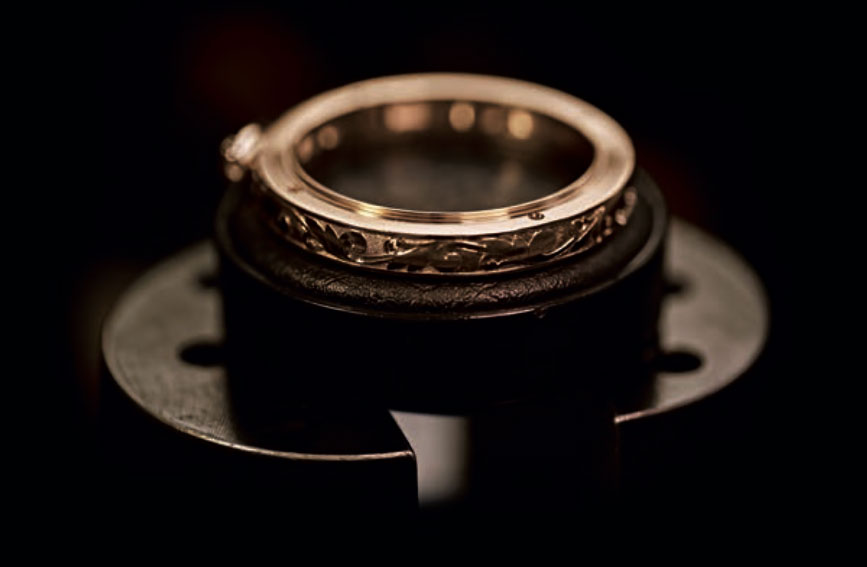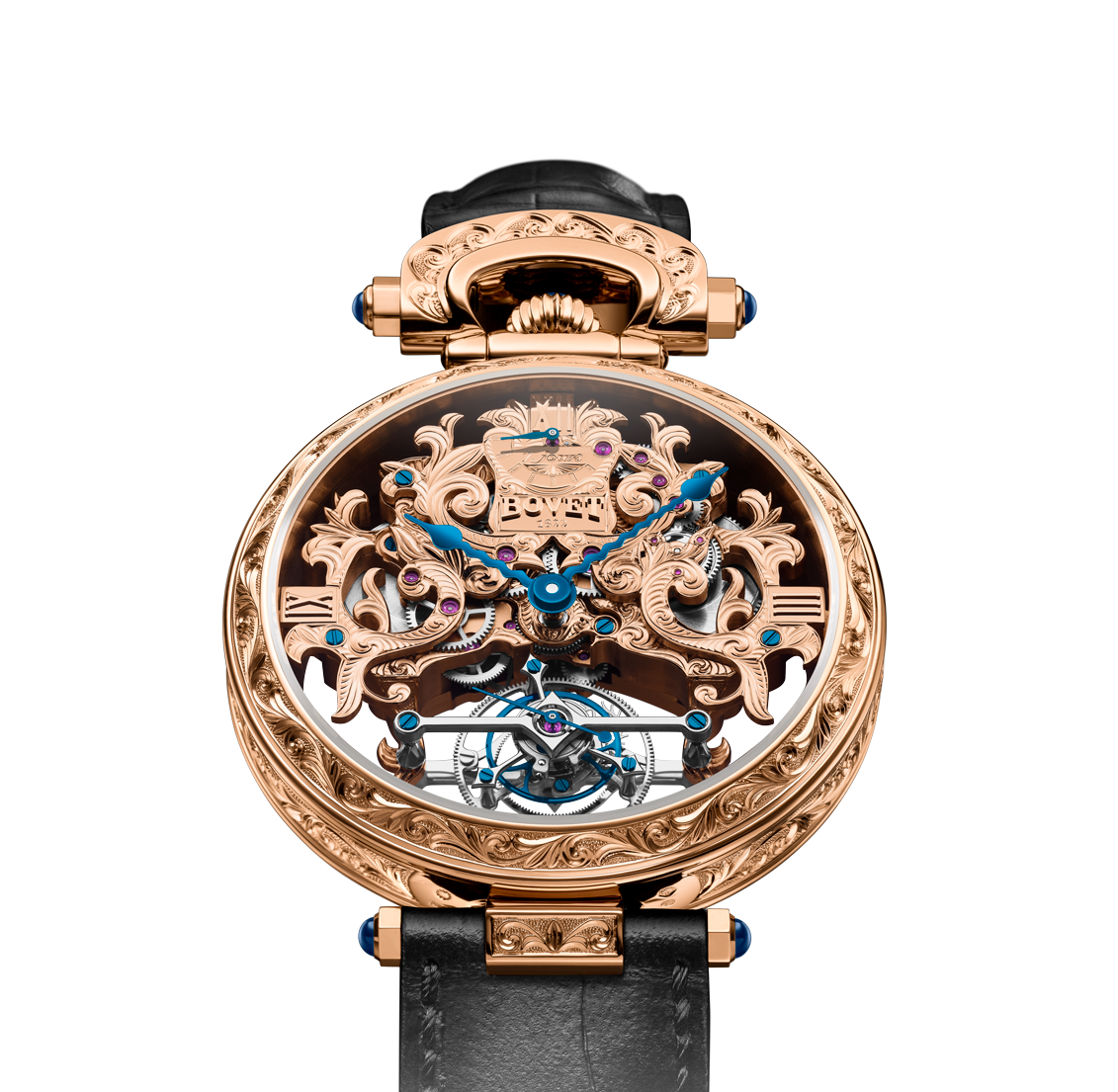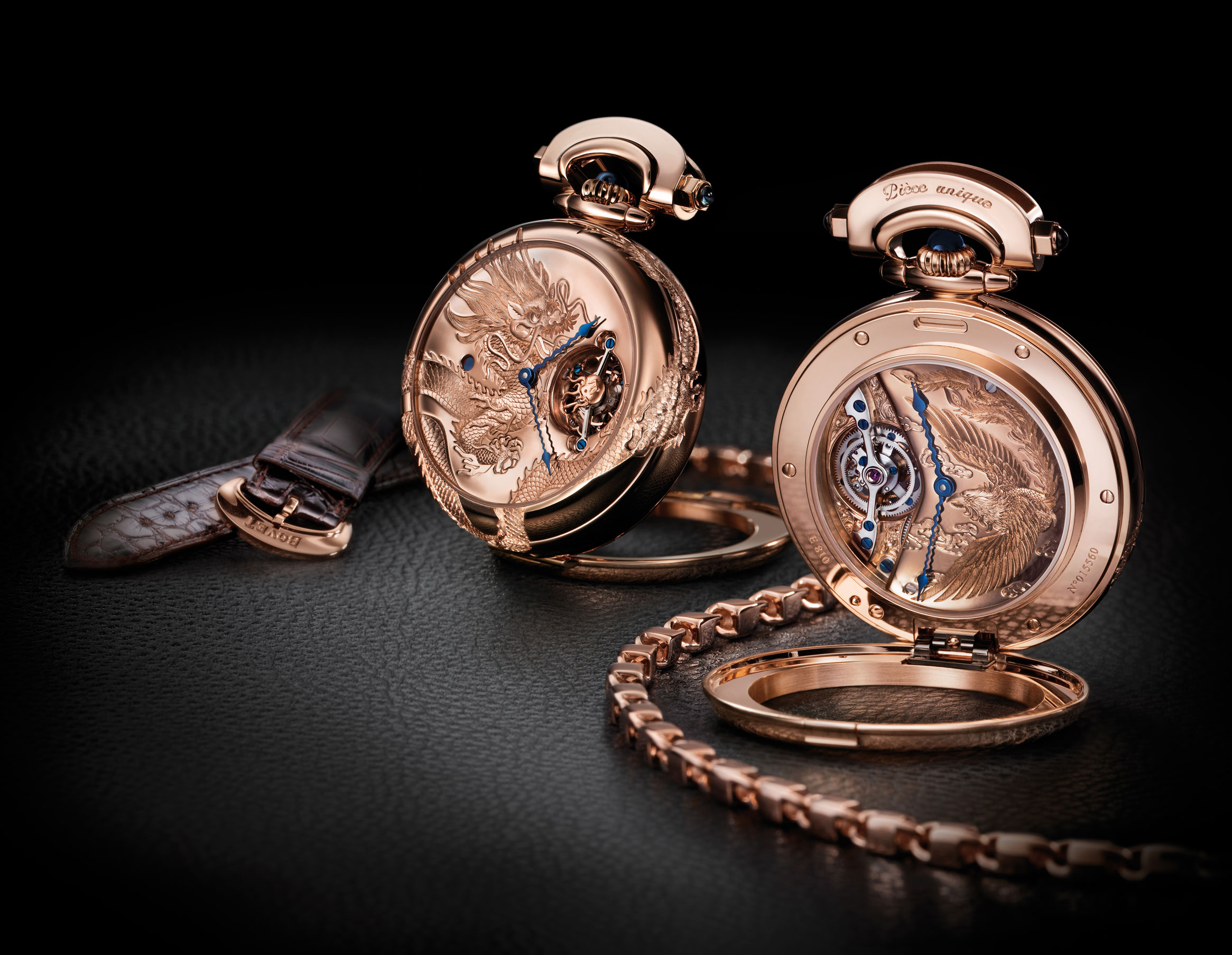
Engraving
200 years after its foundation, the House of BOVET underlines its supremacy in the decorative arts of watchmaking, successfully innovating in perfect harmony with its tradition.
A virtuosity greatly appreciated by collectors, since nearly a third of the timepieces handcrafted annually by BOVET are unique.
A History of Excellence
A t the dawn of the 19th century, when Edouard Bovet manufactured his first watches, he prioritized their decorations. Cases and movements were adorned with gems, pearls, miniature paintings in Grand Feu enamel, and engravings
Historical Monument
T he House of BOVET quickly became a reference in terms of the decorative arts. Indeed the Emperor of China was one of the earliest collectors, and today many BOVET timepieces remain part of the priceless heritage of the Forbidden City. Read more...
New Life & the Birth of Horlogerie
I n addition to precious stone setting and enamel work, engraving is omnipresent throughout BOVET’s history.
In the engraving of his movements, Edouard Bovet introduced a hitherto unknown level of detail. Under his impulse, the decoration of movements became much more subtle and, in a bold new step, every possible surface was engraved to compose veritable three-dimensional masterpieces. The results, both convincing and original, led Edouard Bovet to reveal his engraved movements to the naked eye by incorporating the first transparent case-backs in his designs.
Hand Engravings
A ll manufacture movements powering BOVET timepieces are hand-finished and hand-decorated. Heirs to the expertise of their predecessors and loyal to the history of the House, the artisans of BOVET are able to decorate every detail of each timepiece.

Fleurisanne
T his style of engraving is the decorative pattern featured most often on BOVET timepieces of the 19th century. Today, it remains the most sought-after by collectors, whether for decorating a dial, a case, or the bridges of a movement.



